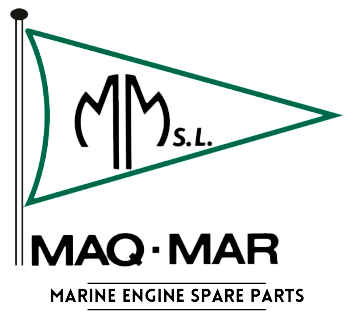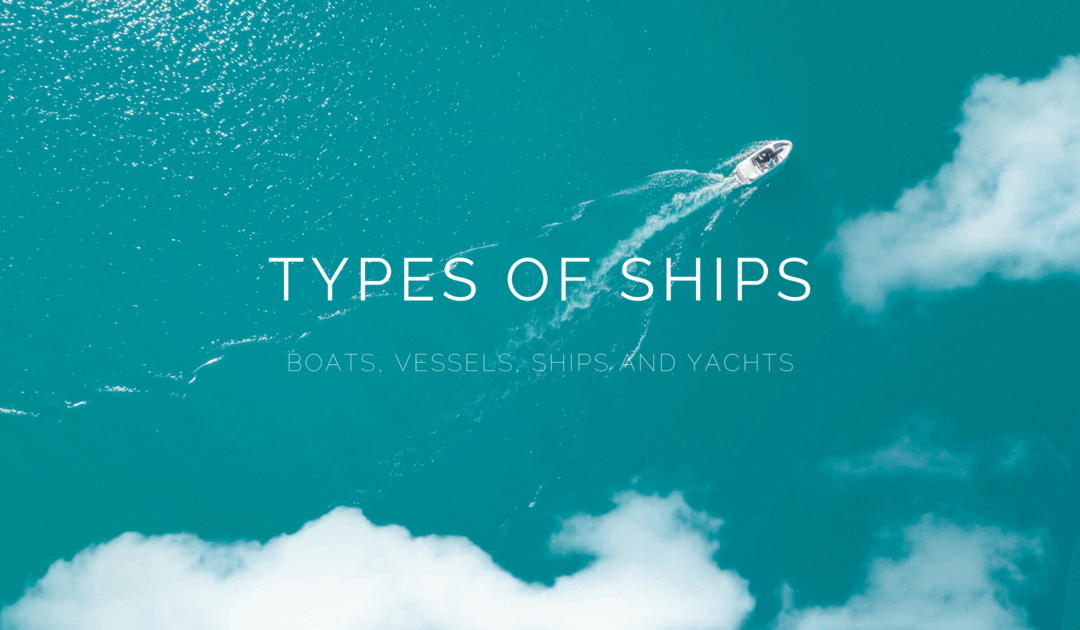What is a ship? How many types of ships are there on the market? How do they differ? In today’s post we answer these questions.
First of all, what is a ship?
Ship: floating object more than 2.5 meters in length.
In addition, ships can be classified according to their length:
- Boat: floating object with a maximum length of 2.5-24 meters.
- Vessel: floating object more than 24 meters in length.
- Yacht: floating object with a length of 10-24 meters.
- Large yacht: yacht 24-40 meters in length.
- Superyacht: yacht 40-60 meters in length.
- Megayacht: yacht over 60 meters in length.
Apart from the above classifications, there are others. We explain them below.
Types of recreational ships
There are different types of ships that differ in propulsion system, size and structure. There are 3 types of ships for recreational purposes: non-powered boats, sailboats and motorboats.
1.- Types of ships without propulsion
There are three types of ships that do not use automatic propulsion systems, but are driven by the use of paddles or oars: kayaks, gondolas and canoes.
- Kayaks: they are a type of canoe, moved by double paddles. They are rigid and inflatable.
- Gondolas: they are typical of Venice, used mainly as tourist attractions in cities with canals or rivers.
- Canoes: they are moved by single paddles.
2.- Types of sailing ships
- Dinghy sailing ships: they are small and can be easily transported.
- Regatta sailboats: they are light with original and aerodynamic designs.
- Sport sailboats: unlike dinghy sailing ships, they have a keel, their sails are wider and allow them to achieve greater momentum.
- Vintage sailboats: they tend to have relatively small dimensions and are designed for 24 – 48 hour sea excursions.
- Regatta sailboat/cruisers: they are a bit larger and heavier than the previous ones and usually have more aggressive and sporty designs.
- Recreational sailboats: they usually have enough space for 10 people or more and are used for sightseeing tours.
- Motorsailer: they have an engine installed at the rear of the ship that is usually used for most of the sailing time, since their sails are only used in ideal wind conditions.
- Cruising sailboats: they are large and designed for very long voyages. They are usually equipped with powerful engines. They have a large storage capacity for carrying provisions.
- Sailing yacht: they incorporate one or more engines to propel them over the water, but also have large sails to save fuel.
- Multihull sailboats: they offer more habitability than monohulls thanks to their generous space.
3.- Types of motor ships
- Auxiliaries: the most common are small inflatable boats with a low-power outboard motor that can be easily stowed and deployed.
- Jet skis: these are compact and lightweight with water jet propulsion.
- Open bow boat: their classic layout usually includes a V-shaped settee in the bow and seats in the cockpit. They usually have a powerful inboard engine.
- RIB boats: they have rigid hulls and inflatable floats with inboard or outboard engines.
- Cabin boats: they usually have an open cockpit and a closed bow where the cabin is located.
- Sport fishing ships: they have a raised bow that protects from waves and a stern with good buoyancy.
- Yachts: they have recreational purposes and are high-end. They can be sail or motor boats. The length is usually at least 10 meters, below this size they are considered cruisers.
Types of vessels
What types of vessels are there? To begin with, let’s remember that a vessel is a floating object with a length of more than 24 meters.
There are five main groups of vessels depending on their purpose: transport of goods, transport of passengers, fishing, defence, and vessels for auxiliary work.
1.- Types of ships for international freight transport
- General cargo vessels: they cannot carry containers.
- Bulk carriers: to transport loose cargo (grain, cement or minerals). They are classified according to their size.
- Container ships: containers are large and automated. They can carry up to 15,000 containers.
- Roll on – roll off vessels: to transport vehicles and trucks. They are characterized by having a large folding door at the stern or bow that acts as a ramp.
- Car-Carrier: designed for loading and unloading cars.
- Semi-submersible heavy-lift: for transporting large cargoes such as oil platforms, ships, etc. They are partially submerged by filling their ballast tanks so that the cargo is placed on top.
- Reefers: for transporting perishable goods such as fruits and vegetables.
- Tankers: to transport liquid goods.
- Oil tankers: they are tankers that transport oil and dock at sea. “Suezmax” is the name given to tankers whose dimensions allow them to transit the Suez Canal and “Panamax” to those that can transit the Panama Canal.
- Supertankers: characterized by such dimensions that do not allow them to cross the Suez and Panama canals. They can be more than 400 meters long.
- Gas or methane tankers: to transport natural gas (liquefied gases).
- Chemical cargo vessels: they are used to transport chemical products (phenol, ammonia, gasoline, etc.). They have a double hull, special painting and steel tanks.
- Livestock vessels: they transport live animals.
- Supply vessels: they are engaged in the supply of fuel to other ships, perform the function of firefighters and other rescue tasks, supply tasks, transportation, equipment loading, maintenance of offshore wind power plants, etc.
- Multipurpose ships: engaged in plastic waste collection, material transport, support to other ships, etc.
Among ships used for international cargo transport, there are various designations depending on the size of the ship and the cargo it can carry (dwt). This determines the routes it can transit and the ports at which it can dock.
DWT (deadweight tonnage): the carrying capacity of a ship.
- Handysize: up to 35,000 dwt and 130-150 metres in length.
- Handymax: from 35,000-50,000 dwt and 150-200 metres in length.
- Panamax: 50,000-80,000 dwt, 294 metres in length and 32.3 metres in beam. They are so called because their dimensions conform to the maximum dimensions permitted for transit through the old locks of the Panama Canal. The locks are used to lift the ships 26 metres (85 feet) from sea level to the level of Gatun Lake.
- Neopanamax: they use the dimensions of the new locks after the 2016 expansion, and can be up to 370.33 metres (370.33 metres) in length.
- Aframax: from 80,000-120,000 dwt. They have the standard dimensions for oil tankers.
- Capesize: around 175,000 dwt. They cannot cross the Panama or Suez Canal. They usually pass Cape Horn in South America or the Cape of Good Hope in South Africa.
- Suezmax: up to 181,000 dwt, 275 metres long and 48 metres wide. They are so called because their dimensions are as close as possible to those of the Suez Canal.
2.- Types of vessels for passenger transport
- Cruise ships: can reach up to 30 knots (56 km/h). There are short cruises, standard cruises (1 week), and longer cruises or round-the-world cruises.
- Ferries: used for short distances.
3.- Types of fishing vessels
- Bonito vessels
- Trawlers
- Tuna vessels, etc.
4.- Types of maritime defence and security vessels
- Coastguard vessels
- Military vessels
- Patrol vessels
- Amphibious
- Provisioning
- Salvage
- Surveillance
- Auxiliary
- Minesweepers
- Warships
- Aircraft carriers
- Frigates
- Destroyers
- Battleships
- Submarines
- Tugs
5.- Types of vessels for auxiliary work
- Dredging vessels: to excavate or suck materials from the seabed to increase the draft.
- Tugs: to assist the manoeuvring of other vessels (pulling or pushing).
- Coastal and container transhipment vessels: to navigate in shallow waters (ferries).
- Inland navigation vessels: on rivers, lakes, canals, etc.
- Shipyards: industrial facilities where ships are built and repaired in ports.
Types of yachts
There is no exact definition or specific rules to determine what a yacht is, but most high-end pleasure ships over 10 meters in length are generally considered to be “yachts”.
In relation to the type of propulsion of the yacht, there are two main types:
1.- Types of motor yachts
- Motor cruising yachts: they have ample space for overnight stays on board. Their hulls are planing hulls and are powered by one or more engines.
- Open bow yacht: they usually have V-shaped sofas in the bow and ample seating in the cockpit.
- Sport fishing yacht: they are sport fishing ships that exceed 10 meters in length.
2.- Types of sailing yachts
- Sailing pleasure yachts: they are normally used for sightseeing tours and usually have a capacity for at least 10 passengers.
- Motorsailing yachts: they have smaller sails than usual, which use most of the time the engine installed at the back of the yacht.
- Sailing cruising yacht: they have very long lengths and enough space to store a large number of provisions.
- Multihull sailing yacht: they can have two hulls (catamarans) or even three (trimarans).
At MAQMAR we specialise in spare parts and marine engines for large ships. Do not hesitate to contact us to answer your questions and get a free quote. We are sure to be able to help you find what you need.
See you next post!

